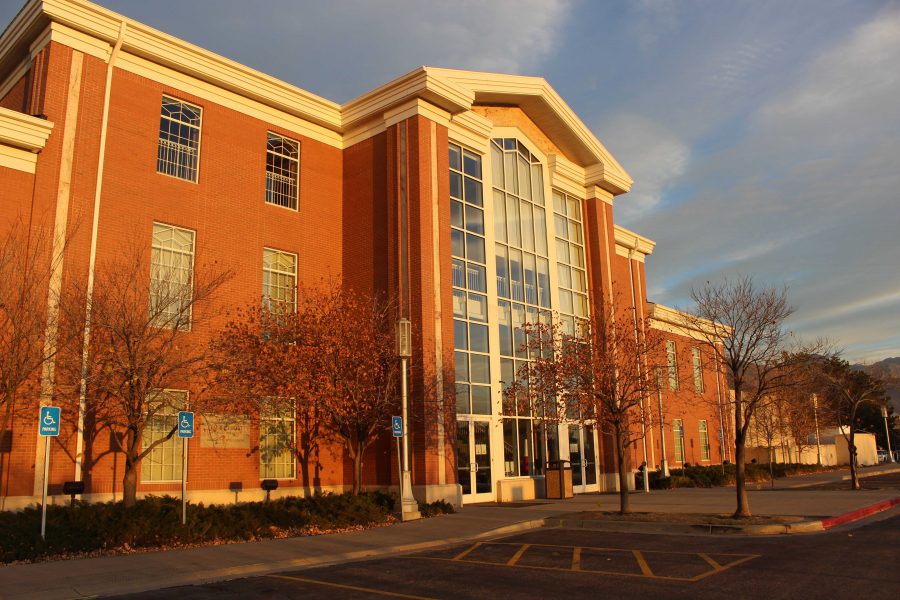Christopherson: How to Handle Loved Ones Spreading Misinformation
Nain Christopherson writes, “Each of us, on both sides of the political aisle, has likely shared wrong information before and will again.” (Courtesy Pexels)
April 14, 2020
This semester, the University of Utah Honors College launched the project portion of a Praxis Lab called Truth, Deception and Information Disorder. You might have seen their lawn signs around campus (before the move to online classes, anyway) with reminders to “Think B4 U Tweet.” With its effort to educate people about the dangers of misinformation this project has come right in the nick of time.
While misinformation poses a threat in any context, it’s particularly dangerous in the throes of a global pandemic where the truth may literally be a matter of life or death. As has been the case over the course of his presidency, Donald Trump is a major culprit in the spread of false information about the coronavirus. But chances are, your friends and family members have contributed to the problem, too. Everyone is susceptible to mistakes, and so each of us has a responsibility to stop the spread of misinformation on our own social media feeds and in our greater communities.
The first step in the process is to recognize the difference between fact, opinion and flat-out falsehood – whether it’s intended or accidental. You might remember the “CRAAP test” from your middle school English classes. Students are taught to spot unreliable sources by checking their currency, relevance, authority, accuracy and purpose. We probably shouldn’t trust a People magazine from 2009 to inform our understanding of current political issues, just as we shouldn’t trust media outlets or individuals known for bias or fear-mongering — even if their articles or tweets were published just yesterday.
If trusting your own judgment feels too risky, it might be worth subscribing to The New York Times, The Washington Post or local papers like The Salt Lake Tribune and Deseret News to make sure your information is reliable and unbiased. It’s even better to go straight to the source. In the case of the coronavirus, the World Health Organization and the Centers for Disease Control and Prevention are two trustworthy places to get the facts. When you need information about other issues, do your homework to find out which government or research organizations deal with your topic of interest and comb through their websites.
However, it’s not enough to be able to spot misinformation unless you call it out when you see it. When — it isn’t really a matter of if — you notice a friend or family member has shared something false, either on social media or in-person, the first thing to do is give them the benefit of the doubt. Assume they weren’t knowingly spreading lies, just sharing what they thought was true or helpful. That makes the next step much easier — be calm and polite as you point out that the “facts” they’re sharing aren’t true. Explain how you know the information is wrong so they can do better in the future, and offer a reliable article or source they could read and share to correct their error. In some cases, it might be worth discussing how misinformation about the topic at hand can get in the way of solving real problems.
Perhaps most importantly, make sure to have these conversations in private. Send the person a direct message or pull them aside so there’s no need for them to get defensive or dig in their heels to save face. We want to teach our friends, family and online acquaintances where to find real facts about the issues they care about, not publicly humiliate them. You’d be embarrassed if it were you.
To that point, it’s important to recognize that each of us, on both sides of the political aisle, has likely shared wrong information before and will again. So double-check your sources, ask yourself whether what you’re sharing is factual or someone’s opinion and be open to correction when you make a mistake. The best way to stop the misinformation epidemic — aside from sharing accurate information from the start — is to work together to call out and correct falsehoods wherever we find them.
As you scroll through Twitter and talk with your friends, think carefully before you accept a point as fact or share it yourself. Read more than just the headline. Keep in mind that we’ll be more successful in tackling issues like climate change, wealth inequality and, of course, the COVID-19 outbreak when we eliminate misinformation surrounding them.
n.christopherson@dailyutahchronicle.com
Editor’s note: Signs and symptoms of COVID-19 include fever, dry cough, tiredness, and shortness of breath. These symptoms are believed to occur between 2 and 14 days after a person is exposed to the disease. If you have these symptoms and have recently come into contact with a person who is known to have COVID-19, or if you have recently traveled to an area with community spread of the disease, you should call your doctor. Areas with community spread of COVID-19 are believed to include China, South Korea, Italy, Iran, and Seattle. If you do not have a doctor who you visit regularly, please call the Utah Coronavirus Information Line at 1-800-456-7707 or the University of Utah Health hotline at 801-587-0712. Do not go to a healthcare facility without first making arrangements to do so.












